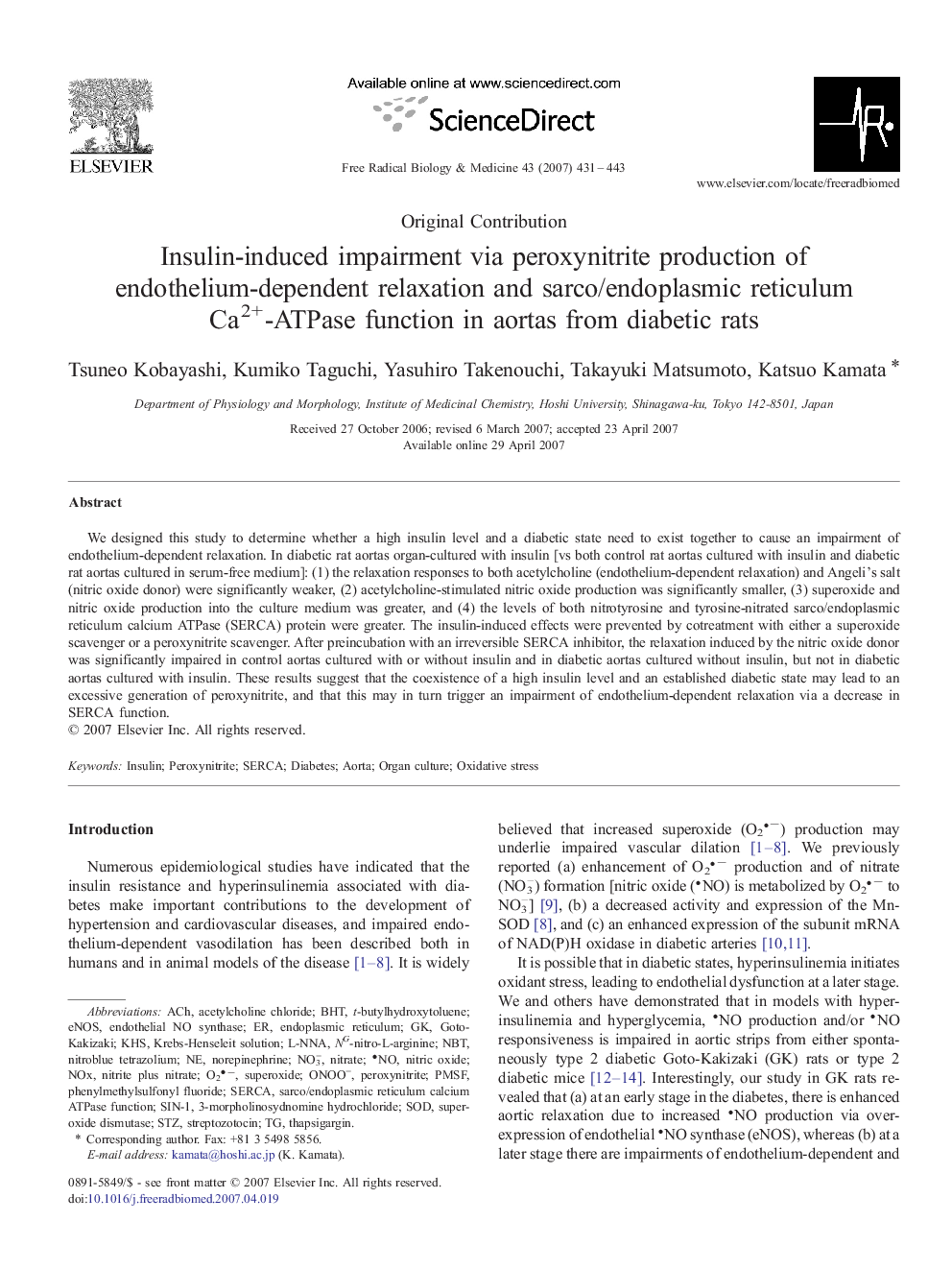| Article ID | Journal | Published Year | Pages | File Type |
|---|---|---|---|---|
| 1911094 | Free Radical Biology and Medicine | 2007 | 13 Pages |
We designed this study to determine whether a high insulin level and a diabetic state need to exist together to cause an impairment of endothelium-dependent relaxation. In diabetic rat aortas organ-cultured with insulin [vs both control rat aortas cultured with insulin and diabetic rat aortas cultured in serum-free medium]: (1) the relaxation responses to both acetylcholine (endothelium-dependent relaxation) and Angeli’s salt (nitric oxide donor) were significantly weaker, (2) acetylcholine-stimulated nitric oxide production was significantly smaller, (3) superoxide and nitric oxide production into the culture medium was greater, and (4) the levels of both nitrotyrosine and tyrosine-nitrated sarco/endoplasmic reticulum calcium ATPase (SERCA) protein were greater. The insulin-induced effects were prevented by cotreatment with either a superoxide scavenger or a peroxynitrite scavenger. After preincubation with an irreversible SERCA inhibitor, the relaxation induced by the nitric oxide donor was significantly impaired in control aortas cultured with or without insulin and in diabetic aortas cultured without insulin, but not in diabetic aortas cultured with insulin. These results suggest that the coexistence of a high insulin level and an established diabetic state may lead to an excessive generation of peroxynitrite, and that this may in turn trigger an impairment of endothelium-dependent relaxation via a decrease in SERCA function.
